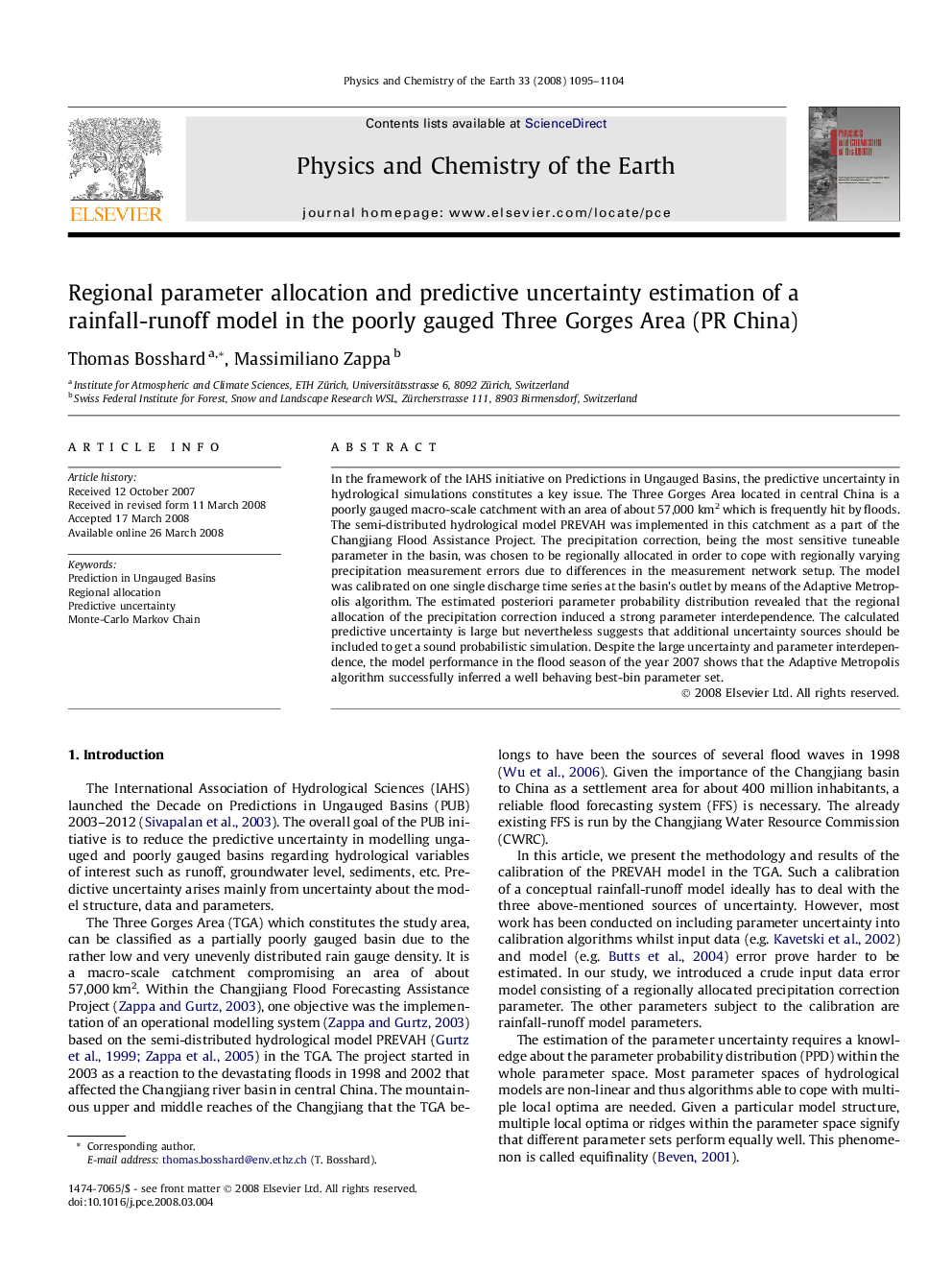| Article ID | Journal | Published Year | Pages | File Type |
|---|---|---|---|---|
| 4721453 | Physics and Chemistry of the Earth, Parts A/B/C | 2008 | 10 Pages |
In the framework of the IAHS initiative on Predictions in Ungauged Basins, the predictive uncertainty in hydrological simulations constitutes a key issue. The Three Gorges Area located in central China is a poorly gauged macro-scale catchment with an area of about 57,000 km2 which is frequently hit by floods. The semi-distributed hydrological model PREVAH was implemented in this catchment as a part of the Changjiang Flood Assistance Project. The precipitation correction, being the most sensitive tuneable parameter in the basin, was chosen to be regionally allocated in order to cope with regionally varying precipitation measurement errors due to differences in the measurement network setup. The model was calibrated on one single discharge time series at the basin’s outlet by means of the Adaptive Metropolis algorithm. The estimated posteriori parameter probability distribution revealed that the regional allocation of the precipitation correction induced a strong parameter interdependence. The calculated predictive uncertainty is large but nevertheless suggests that additional uncertainty sources should be included to get a sound probabilistic simulation. Despite the large uncertainty and parameter interdependence, the model performance in the flood season of the year 2007 shows that the Adaptive Metropolis algorithm successfully inferred a well behaving best-bin parameter set.
